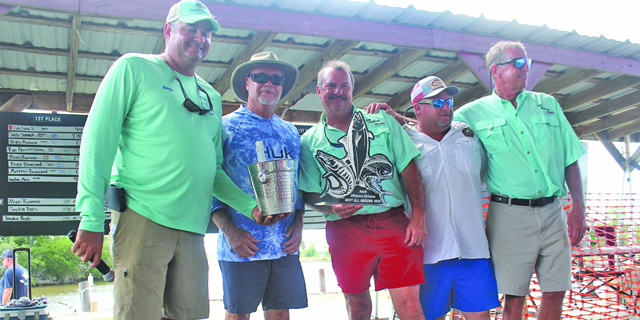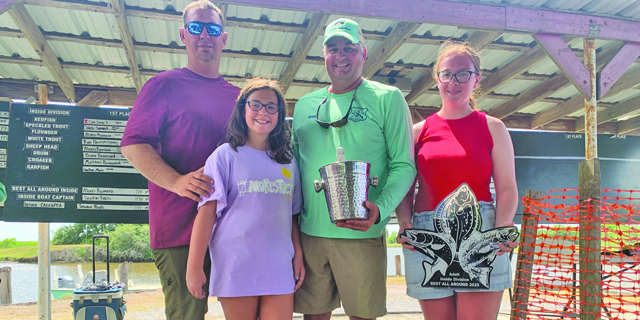Adopt Your Best Friend
Published 8:28 am Friday, December 4, 2015
By Amanda Jean Harris | Photos by Robin May
Trending
Acadiana Animal Aid is like Disneyland for dogs. However, the 10-acre property in Carencro does something far more valuable for the thousands (and thousands) of animals it houses every year than simply entertain them. They quite literally save their lives. In fact, so significant are their efforts that they very well could double the number of dogs saved this year. These days, the idea of a no-kill shelter becoming the standard in this region doesn’t sound so crazy.
br
Each year, about 5,000 animals are killed in Lafayette alone for one little reason — there isn’t enough room. Solving the problem is two-fold — diminishing the pet population as a whole via spaying and neutering and raising awareness about adoption instead of shopping for pets from puppy mills.
br
“We are focused on educating our youth,” says Acadiana Animal Aid Development Director Lauren Prather. “They are the ones that can make an impact in animal welfare and we are very focused on targeting them and teaching compassion toward animals, animal welfare laws and the importance of adopting and not shopping for pets.”
br
Trending
It’s a cause near to the heart of the staff and volunteers that make up the organization that has been serving the area for more than 40 years. These are volunteers like Lydia Fontenot who has been working with the animals since 1999. As a social worker, Fontenot has seen a lot in her life — both in her career and as she cares for animals at Acadiana Animal Aid. “This is a moral issue,” she says of the treatment of animals.
br
It’s a sentiment that is best understood when you step foot onto the property just off I-49. There are several buildings on the sprawling grounds including a vet clinic (they are the only no-kill shelter in the area with a veterinary clinic), a building for dogs, a cottage for cats and a beautiful barn for animals that need treatment along with areas for quarantine.
br
Some of these beautiful animals were simply abandoned when their usefulness ran out by the standards of a puppy mill or an abusive owner. Others have been pulled from a kill shelter that were running out of space. One sweet white bulldog with a penchant for kisses on the mouth (when you may least expect a big smack) knows how to steal your heart. Smoochy is only five years old, yet her swayed back and body show evidence of being bred a gross number of times at a puppy mill. Without Acadiana Animal Aid, a dog like Smoochy has little hope for a happy home.
br
Instead, Smoochy has a chance to be adopted in Acadiana or transported out of state to be adopted. While Acadiana Animal Aid has been adopting and rescuing animals for years, this year they transported nearly 1,000 dogs. This number is compared to the total number of lives saved last year of 600.
br
Acadiana Animal Aid has an effective process. They pull dogs from high kill shelters throughout the state — 19 total — and find them a home. “These animals are either hours or days away from being euthanized. We bring them here and vet them and cover the medical costs and take care of them and house them,” Prather says.
br
Thanks to social media pages like Facebook, the photos and descriptions of dogs are easily spread. Additionally, a new effort called the transport program is making a huge dent in the at-capacity frequency of shelters.
br
“Through a grant we have a transport vehicle and they make trips out of state,” Prather says. “They go to either Colorado or New England and some have homes the minute they get there. It’s super successful.”
br
The question then is: Why are there so many readily available homes in other areas of the country while Louisiana kill shelters are overflowing? They don’t have homeless dogs. They don’t have an overabundance of animals up for adoption.
br
“They have breeding control laws and spay and neuter laws. If they euthanize it’s because they are sick. It’s for a humane reason. Not because of space,” Prather says.
br
And so, the idea that Acadiana could one day also be home to no-kill shelters as the standard and not the exception could very well be a reality. When Fontenot came to Animal Aid more than 15 years ago she had never heard of a no-kill shelter and she was housing 13 rescue dogs herself. Today, she says considering the progress that’s been made just in this organization alone, she has hope that kill shelters could become a thing of the past eventually.
br
“It’s about education and awareness,” she says noting some states require pet stores only have dogs for sale from shelters rather than breeders.
br
It will take a village (or two) to bring about the kind of changes Prather and Fontenot speak about. But, it is possible. “There really is a solution,” Prather says. “It’s going to take awhile, but we can look around the country and see how people do it. Austin is almost no kill. You have to get everyone involved … it boils down to spay and neuter and education and awareness. The more people that know how they can help, the better.”
br
The reach of Animal Aid has helped increase that knowledge. Once named Lafayette Animal Aid the group changed their moniker to better reflect their growth and coverage of the region. Events like Bark in the Park in November of each year bring together stakeholders and animal lovers to raise funds. And the efforts to dispel myths about rescue animals and make the adoption process simple all add up to more people choosing to adopt rather than shop. In fact, those who seek purebred pups can actually find them in shelters like Acadiana Animal Aid. If not, most breeds have rescue organizations that have specific breeds available.
br
“There is a myth that these dogs have issues,” Fontenot says. “But we know the history of the dog and we try to match the right animal to the family.”
br
Instead of a quick transaction, Animal Aid can offer a meet and greet for pup and parent to establish a relationship. “We want our pets back if it doesn’t work,” Fontenot says.
br
Those adopting can first briefly take a dog home for a week or two to see if it’s a good fit for the family.
br
“They are so unique and so grateful,” Prather says. “When you take them into your home and love them, they will love you with all of their might because they have experienced some terrible things in their life. It’s the most rewarding thing … they love you for it.”





